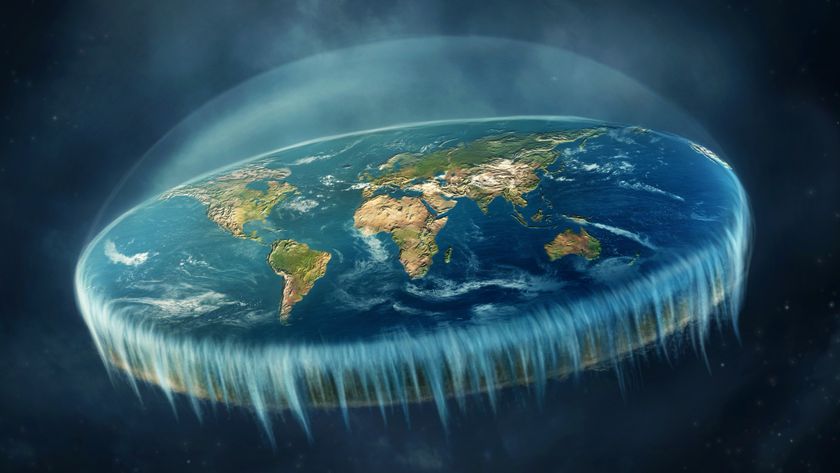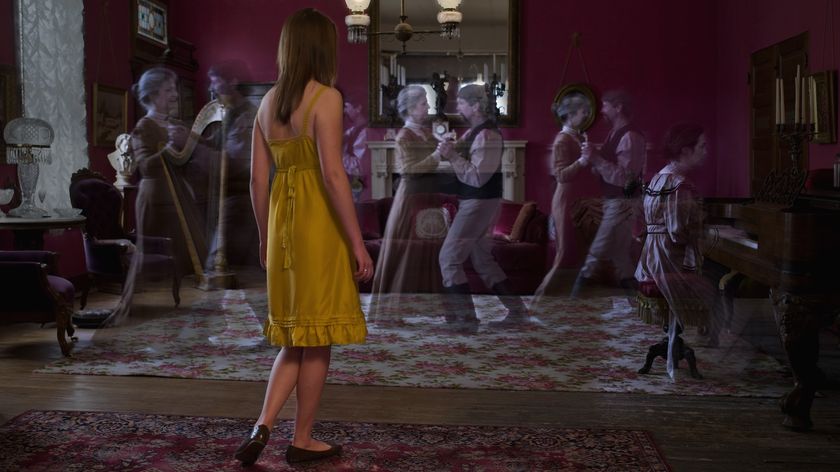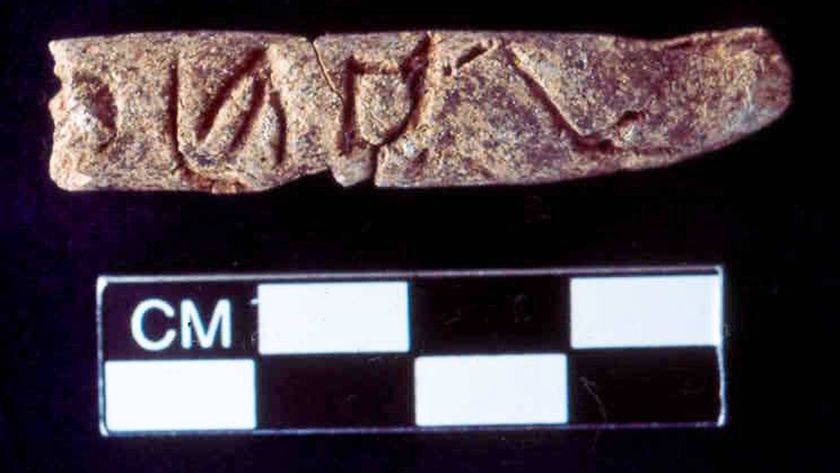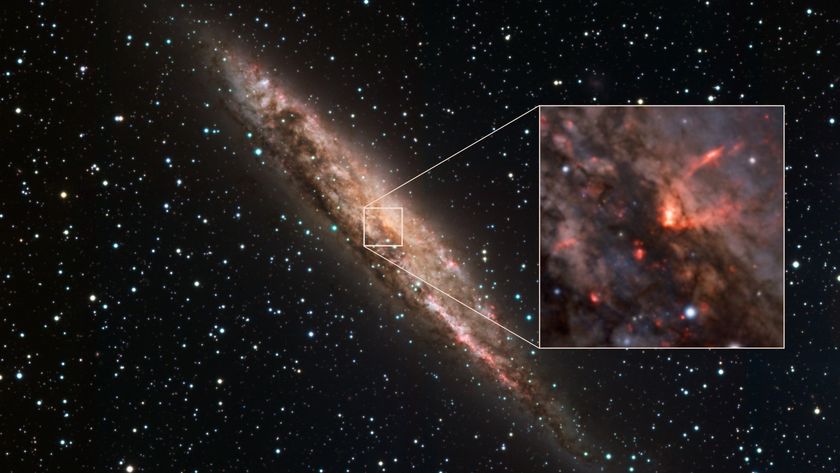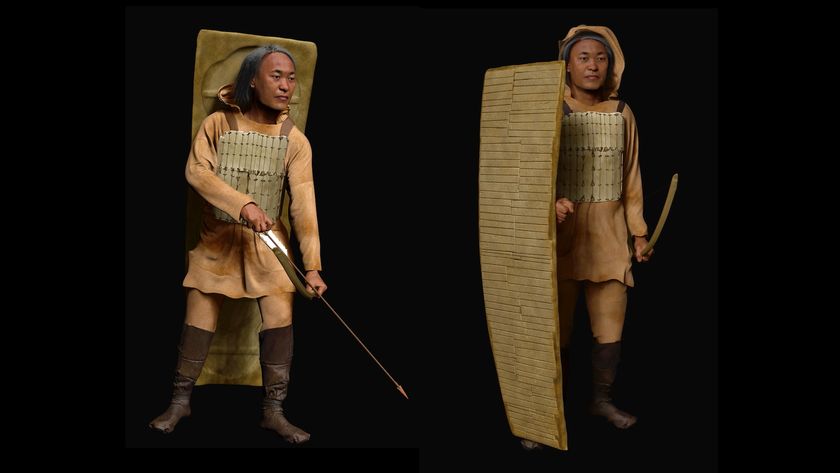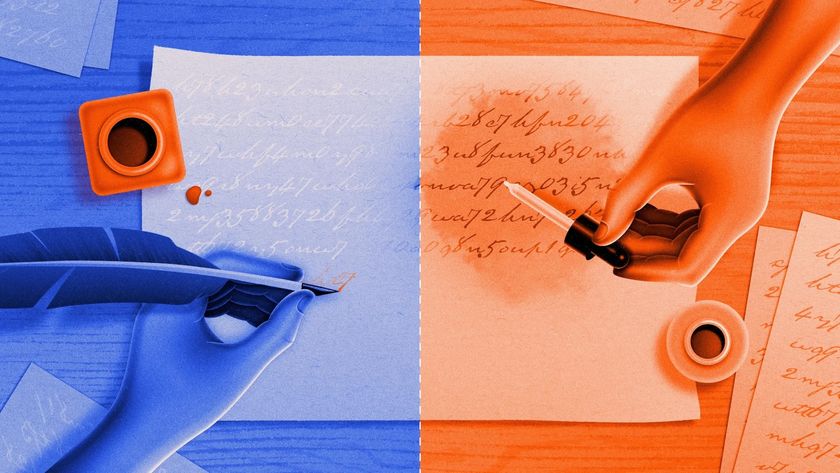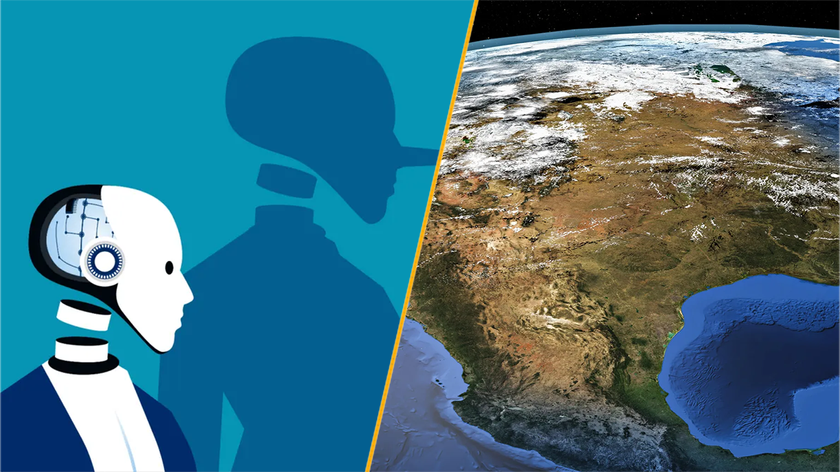New Bigfoot Image Cut Down by Occam's Razor
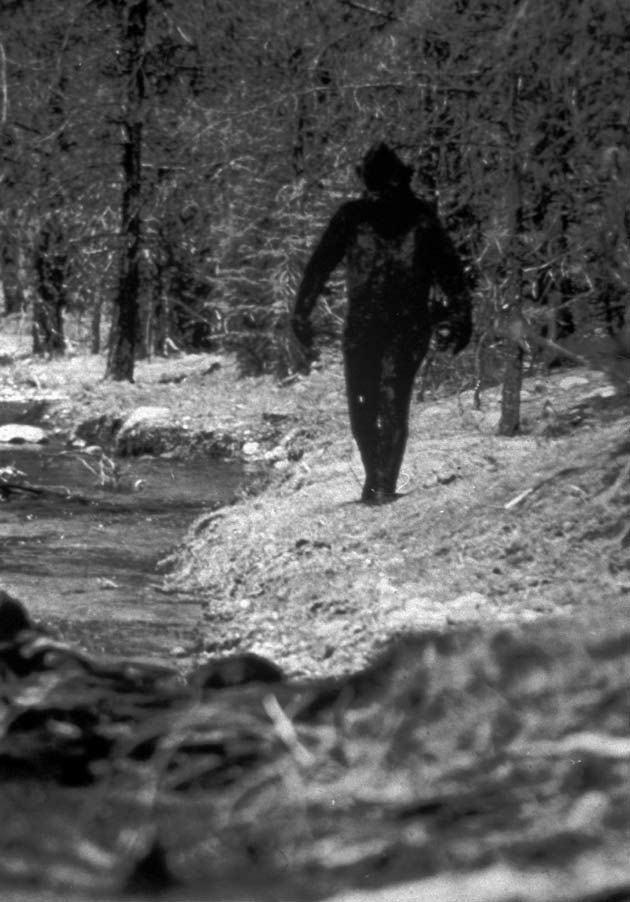
A photograph captured on a trail camera in the Minnesota woods has some people suggesting that Bigfoot has once again been filmed. In October, brothers Casey and Peter Kedrowski rigged a motion-activated camera to record wildlife near Chippewa National Forest. When the pair recently looked at the images, one showed a dark, featureless human-like figure that made them wonder if they had accidentally photographed the mysterious Bigfoot creature.
The figure looked a lot like a bow hunter might appear, though none of the local hunters the brothers spoke to admitted to being in the area on the night in question. Soon a pair of local Bigfoot enthusiasts arrived on the scene, and "authenticated" the mystery. Bigfoot buff Don Sherman analyzed the photo, comparing it to the most famous image of an alleged Bigfoot, seen in a 1967 film. According to Sherman, the proportions of the figure that the Kedrowskis captured are very similar to the figure in the 1967 Bigfoot film. "I am pretty convinced," Sherman said.
Sherman may be convinced, but others aren't---and this Bigfoot story doesn't survive one of the most important scientific principles, Occam's Razor. This idea (attributed to a William of Occam, who devised his version in the 1300s) is that if you have a phenomenon to be explained and several different theories are proposed as solutions, the simplest one (or the one with the fewest assumptions) is likely to be the correct answer.
For example, if a camera snaps a photo in the woods of a bipedal form on a trail that closely resembles a human in size and shape, is it more likely that the figure is actually a person, or that it's Bigfoot—an animal that never proven to exist? Both are possible, but which is more likely?
The arms and legs of the figure in the trailcam image do not show the curvature of arm or leg muscles, a synthetic jacket seems to reflects a sheen, and the figure seems to be wearing gloves. It might indeed be Bigfoot—if Bigfoot has taken to wearing warm winter clothes as it hikes the trails.
Ironically, if Sherman is correct, his comparison actually undermines the whole case for Bigfoot, since the image is almost certainly a person in a dark jacket (whether hunter or hoax). That is, this Bigfoot expert is saying that a photo of a person in a dark woodsman's outfit looks a lot like a famous Bigfoot photo that many suspect is really a guy in a dark ape outfit. If the new (bogus) Bigfoot image closely resembles an old one, then logically the old image is suspect.
Many monster-hunters have distanced themselves from the recent photo. Loren Coleman, founder of the International Cryptozoology Museum in Portland, Maine, said that he thought the Bigfoot looked "bogus" and may have been a prank. "All I can say is that this merely continues the media's need to push weak Bigfoot stories on an unsuspecting public. This image seems to have no solid foundation of evidence," Coleman said.
Sign up for the Live Science daily newsletter now
Get the world’s most fascinating discoveries delivered straight to your inbox.
This case also highlights one of the pitfalls of researching mysterious subjects like Bigfoot, ghosts, and UFOs: anyone can declare himself or herself an expert on the topic. There are no governing bodies or accrediting institutions for investigators, and most casual readers can't tell which investigators use credible scientific methods and which simply put up a Web site and deem themselves authorities. The Minnesota trailcam non-Bigfoot photo says nothing about whether Bigfoot exists, but it does reveal a great deal about how these stories begin and spread.
- Top 10 Beasts and Dragons: How Reality Made Myth
- Our 10 Favorite Monsters
- Monsters, Ghosts and Gods: Why We Believe
Benjamin Radford is managing editor of the Skeptical Inquirer science magazine. His books, films, and other projects can be found on his website. His Bad Science column appears regularly on LiveScience.

